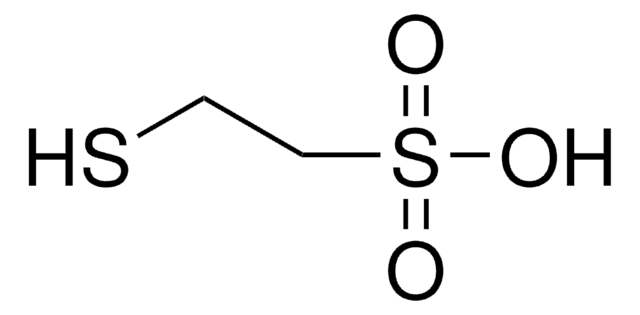If this product has an expiration or retest date, it will be shown on the Certificate of Analysis (COA, CofA). If there is no retest or expiration date listed on the product's COA, we do not have suitable stability data to determine a shelf life. For these products, the only date on the COA will be the release date; a retest, expiration, or use-by-date will not be displayed.
For all products, we recommend handling per defined conditions as printed in our product literature and website product descriptions. We recommend that products should be routinely inspected by customers to ensure they perform as expected.
For products without retest or expiration dates, our standard warranty of 1 year from the date of shipment is applicable.
For more information, please refer to the Product Dating Information document: https://www.sigmaaldrich.com/deepweb/assets/sigmaaldrich/marketing/global/documents/449/386/product-dating-information-mk.pdf
251682
Sodium 3-mercapto-1-propanesulfonate
technical grade, 90%
Sinônimo(s):
3-Mercapto-1-propanesulfonic acid sodium salt, MPS
Selecione um tamanho
Selecione um tamanho
About This Item
Produtos recomendados
grau
technical grade
Nível de qualidade
Ensaio
90%
Formulário
powder
pf
~220 °C (dec.) (lit.)
solubilidade
water: soluble 50 mg/mL, colorless
grupo funcional
sulfonic acid
cadeia de caracteres SMILES
[Na+].[O-]S(=O)(=O)CCCS
InChI
1S/C3H8O3S2.Na/c4-8(5,6)3-1-2-7;/h7H,1-3H2,(H,4,5,6);/q;+1/p-1
chave InChI
FRTIVUOKBXDGPD-UHFFFAOYSA-M
Procurando produtos similares? Visita Guia de comparação de produtos
Categorias relacionadas
Descrição geral
Aplicação
MPS can be also used in the preparation of Rh nanoparticles by liquid-phase reduction of rhodium (III) chloride.[5]
Palavra indicadora
Warning
Frases de perigo
Declarações de precaução
Classificações de perigo
Eye Irrit. 2 - Skin Irrit. 2 - STOT SE 3
Órgãos-alvo
Respiratory system
Código de classe de armazenamento
11 - Combustible Solids
Classe de risco de água (WGK)
WGK 1
Ponto de fulgor (°F)
159.8 °F - closed cup
Ponto de fulgor (°C)
71 °C - closed cup
Equipamento de proteção individual
dust mask type N95 (US), Eyeshields, Gloves
Escolha uma das versões mais recentes:
Já possui este produto?
Encontre a documentação dos produtos que você adquiriu recentemente na biblioteca de documentos.
Os clientes também visualizaram
-
How can I determine the shelf life / expiration / retest date of this product?
1 answer-
Helpful?
-
-
How is shipping temperature determined? And how is it related to the product storage temperature?
1 answer-
Products may be shipped at a different temperature than the recommended long-term storage temperature. If the product quality is sensitive to short-term exposure to conditions other than the recommended long-term storage, it will be shipped on wet or dry-ice. If the product quality is NOT affected by short-term exposure to conditions other than the recommended long-term storage, it will be shipped at ambient temperature. As shipping routes are configured for minimum transit times, shipping at ambient temperature helps control shipping costs for our customers. For more information, please refer to the Storage and Transport Conditions document: https://www.sigmaaldrich.com/deepweb/assets/sigmaaldrich/marketing/global/documents/316/622/storage-transport-conditions-mk.pdf
Helpful?
-
-
Hi, I was just wondering what the main impurities in this substance are, since the purity is only 90%? If the impurities are of different cations this will affect how I use this product compared with impurities to do with structural defects in the anion.
1 answer-
Quality testing includes a test for purity via thiosulfate titration. No testing for impurities is carried out. Consequently, data characterizing the product's impurities is not available.
Helpful?
-
Active Filters
Nossa equipe de cientistas tem experiência em todas as áreas de pesquisa, incluindo Life Sciences, ciência de materiais, síntese química, cromatografia, química analítica e muitas outras.
Entre em contato com a assistência técnica












